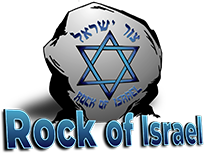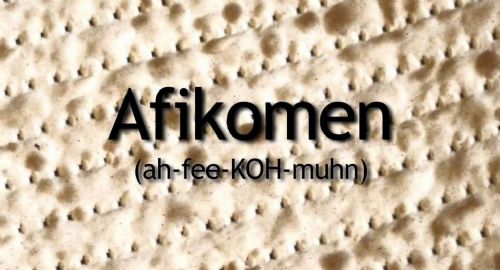So what does the Afikomen have to do with the Messiah? Plenty. Let’s take a look.
First of all, Passover is the Biblical holiday celebrated by Jewish people around the world each spring which commemorates their deliverance from Egyptian bondage by the hand of God. The narrative can be found in the first half of the book of Exodus.
The meal the family gathers together to have each year, to remember this event, is called a “Seder.” This Seder is a very special time with even the most non-religious Jewish people attending it each year.
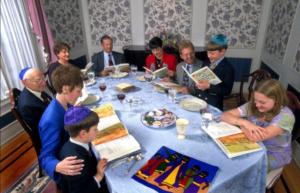
For this article, we wanted to ‘zero-in’ on a specific custom that most “outsiders” to the Jewish community have no idea that occurs each year at the Passover dinner. It is called hiding ‘the Afikomen.’ And we also wanted to see if this ultimately points us to the Messiah.
You see, the Passover Seder has a very specific order that the father leads them through each year. During the seder, they will assign four cups of wine to each of the four parts of the Passover story. Two cups come before the meal and two cups after the meal.
However, something interesting happens between the first and second cup. There is a pouch on the table that contains 3-layers of matzah (unleavened bread.) It is called a “Matzah-Tosh.” During this time the father removes the middle layer of unleavened bread from the pouch. He shows it to everyone and then proceeds to break it in half. Half gets put back into the original pouch.
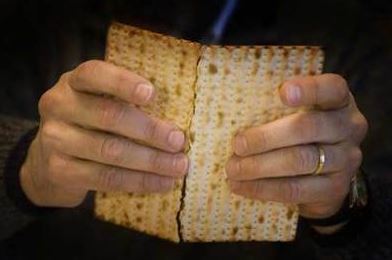
The other half is wrapped in a white cloth and then gets (are you ready for this)…. hidden / buried! However, none of the children at the table can see where the father hid it. That makes this time extra special for the children.
This hidden piece is called the “Afikomen.” The word afikoman is from the Greek epikomen or epikomion, meaning “that which comes after.” And that is precisely what happens. It is not eaten now – it is hidden until after the main meal.
The Afikomen was not part of the original Passover described in the book of Exodus. It is often asked when it was introduced to the service; a very good question to which there is no definitive answer. The Hagaddah (the booklet used during the Seder) does not explain it. And how did the Afikomen get a Greek name anyway? Let’s talk about that later….
As the Seder continues, eventually the delicious Passover meal is served. Then it comes time to clear the table. Dessert comes last. But the Afikomen is supposed to be eaten for dessert. But where is it? It was buried/hidden. So the children are called upon to find the Afikomen! A big (and fun) search ensues till one happy child finds it.
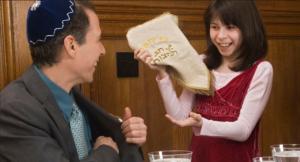
It is returned to the father and sometimes a gift is given as a reward to the finder. The Afikomen is then broken into smaller pieces and each family member eats it. This will be the last food of the evening. Why?
The Mishnah (ancient Jewish writings) instructs that the Passover lamb must be the last food eaten the night of the Seder. So because there are no more lambs served at the seder – the afikoman is now a substitute for the Passover sacrifice (Pesahim 119b.)
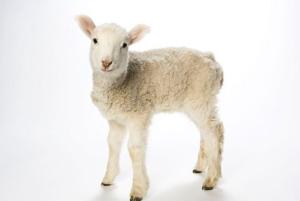
You see, since the destruction of the Temple in the year 70CE, the Afikomen has now become to be a symbolic “reminder” of the Passover lambs we used to eat, but no longer do.
In other words, the Afikomen, is eaten for “dessert” after the Seder meal in commemoration of the paschal (Passover) sacrificial lamb. Since that sacrifice was supposed to be the last thing eaten at Passover, the Afikomen has now taken its place.
This Afikomen custom has been happening for millennia in Jewish homes. So what does it mean?
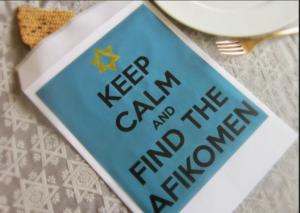
As Messianic Jews, we delight in this ceremony. Why? Because this is a beautiful picture of the Messiah Yeshua (Jesus’ name in Hebrew!)
We know that the Messiah’s sinless body was ‘broken’ in death, wrapped in a cloth and hidden (as in burial), then brought back alive again; resurrected by the power of God. And He is still found by children (like us) who actively look for Him!
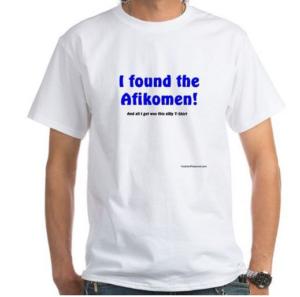
As the Afikomen is eaten by Jewish families as a remembrance of the Pascal lamb. So too, believers in the Messiah, also eat unleavened bread as a ‘remembrance’ of our Passover Lamb. In history this has been called “communion” but the roots are very Jewish! Remember that the Jewish apostle John (Yochanan), when he pointed to Yeshua, declared ‘’Behold! The Lamb of God who takes away the sin of the world!’’ (John1:29)

When Yeshua (Jesus) celebrated Passover with His disciples in the upper room, He broke the unleavened bread and distributed it to His Jewish disciples saying, ‘’Take, eat; this is My body which is broken for you; do this in remembrance of Me.’’ (1 Corinthians 11:24)
When Yeshua (Jesus) celebrated His last Passover meal with His Jewish disciples, He gave them matzah as the symbol of His body. Today, matzah is unleavened, striped and pierced. That is very interesting as the prophet Isaiah describes the Messiah in the same way:
“But He was wounded for our transgressions, He was bruised for our iniquities; the chastisement for our peace was upon Him, and by His stripes we are healed.” (Isaiah 53:5).
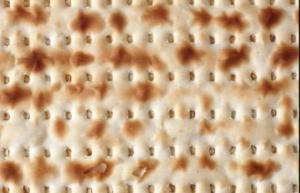
And remember that we mentioned above how would get back to the question of how this Afikomen got a Greek name. Jew’s don’t normally speak Greek, do they? Well, the first century Jewish community did speak Greek. They even made a translation of the Hebrew Bible into Greek called the Septuagint. So is it possible that the early believers in Yeshua (who knew Hebrew and Greek) included this Afikomen as a way to show their faith in the Messiah? We simply do not know. But it is interesting to ponder.
What about the meaning of the three-layered pouch where the Afikomen came from? No one has a definitive answer. Some say it represents the Priests, the Levites and the rest of the Israelites. Other say it reminds us of the three patriarchs, Abraham, Isaac and Jacob. But why would the middle one – the Levites be broken. Or why Isaac?
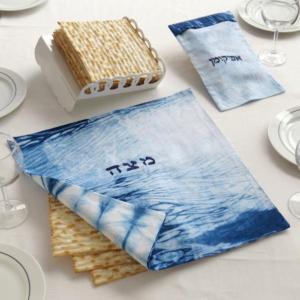
However, Messianic Jews again rejoice at this. Why? Because we believe there is only ONE God, (like the there is only one pouch), YET this ONE God has three distinct areas/persons – Father (Abba), Son (Messiah) and Holy Spirit (Ruach haKodesh).
So the one Matzah-Tosh – with the three layers and the middle matzah being broken, buried and brought back – is a beautiful picture of the Messiah of Israel. He left heaven and came to earth. He was indeed broken, buried and brought back! And… The Afikomen (Messiah Yeshua) is still alive! He was the God of Israel visiting us in human form! (Which has happened before, see Genesis 18:22, Genesis 32:30, Exodus 24:11, Judges 13:22 to name a few…)
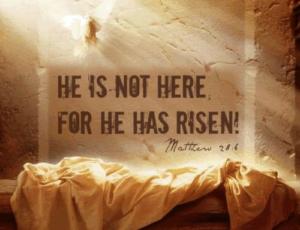
So if you happen to speak to any Jewish person who has ever been to a Passover Seder, ask them about this curious tradition of hiding the ‘Afikomen.’ Then mention what Messianic Jews think of this tradition and see what they say.
